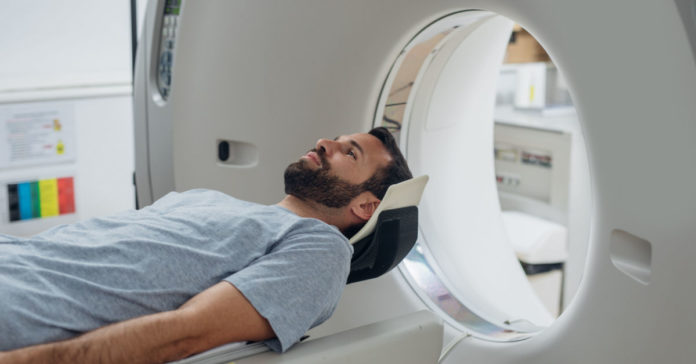Overview
Diagnosing a disease is a challenging part of the treatment process. However, we have several ways to ease this process, thanks to modern science and medicine. Computer Tomography (CT) is an innovative technology that helps healthcare providers accurately diagnose abnormalities. Learn more about CT scan, its requirement, and their side effects on this comprehensive blog.
What is a CT scan?
Computer Tomography scan or CT scan is a procedure that combines a series of X-ray images taken from various angles of the body and forms cross-sectional images of the bones, blood vessels and soft tissues inside your body. Images from a CT scan offer more information than an X-ray would.
There are various applications for a CT scan, and it is also beneficial for quickly assessing patients with internal damage from automobile accidents or other types of trauma. Nearly all parts of the body can be analyzed using a CT scan, which helps plan medical, surgical, or radiation treatments and detect diseases and injuries.
Why is a CT scan Performed?
Your doctor may find it necessary for a CT scan to:
- diagnose and monitor diseases and disorders such as cancer, heart disease, lung nodules, and liver masses
- detect skeletal and muscular conditions, including bone cancers, and fractures
- identify a tumor, infection, or blood clot‘s location
- help with surgical, biopsy, and radiation therapy procedures
- track the results of specific treatments, such as cancer treatment
- identify internal bleeding and injuries
What are the Risks Involved in CT scans?
Even though a CT scan is a comparatively risk-free procedure, it involves minor risks. They are:
- Radiation exposure: During a CT scan, you are temporarily exposed to ionizing radiation. Since a CT scan produces more detailed results than a standard X-ray, the radiation exposure is higher. Even though large radiation exposure may increase your risk of cancer, the small radiation doses used in CT scans are not proven to be harmful over the long term.
- The numerous advantages of CT scan far outweigh any minimal possible risks. To gather the necessary medical data, doctors use as minimal an amount of radiation possible. Moreover, modern equipment and methods release less radiation than older ones.
- Injury to unborn children: If pregnant, inform your doctor beforehand. Although a CT scan’s radiation is unlikely to harm your baby, your doctor may advise an alternative screening, such as an ultrasound or MRI, to spare your child from radiation exposure. No adverse effects were detected in people where a minimal radiation dose was used during CT imaging.
- Responses to Contrast Dye: During some CT scans, a special material known as contrast dye is used to help highlight blood arteries, intestines, and other structures. When contrast dye is used, it appears white on the picture, blocking the x-rays from entering those areas. You may receive the contrast material in three ways.
- Oral: You may need to drink the contrast material if your stomach or esophagus is being scanned.
- Intravenous: For your liver, gallbladder, urinary system, blood arteries, and other organs to appear more clearly in the images, contrast chemicals may be injected into a vein in your arm. During the injection, you may feel warm or experience a metallic taste on your tongue.
- Enema: A contrast substance may be inserted into your rectum to make your intestines more visible.
- The majority of reactions are minor and produce a rash or itching. An allergic reaction can occasionally be severe or even fatal. If you’ve ever experienced a reaction to the contrast dye, let your doctor know.
How to Prepare for the CT scan?
Before the scan, you may have to change into a patient gown and remove any metal items that could affect the quality of the image, such as a belt, jewelry, dentures, and eyeglasses. You may also need to fast a few hours before the procedure.
How to prepare for a Child’s Scan?
The doctor may suggest a sedative to keep your baby or toddler comfortable and still throughout the CT scan. Movement distorts the images, which could produce unreliable results.
What Happens During a CT scan?
CT scanners look like a big doughnut turned on its side. You are securely placed with straps and pillows on a small, motorized table that slides into the tunnel through the hole. If your head is being scanned, a customized cradle may be used to maintain your head steady throughout the scan.
Inside the scanner, detectors and the X-ray tubes circle you, and each rotation creates images of thin slices of your body.
A technologist will observe you from another room, and you can communicate with them through an intercom. Sometimes, during the procedure, you may need to hold your breath at specific times to avoid blurred images.
What Happens After a CT scan?
After the exam, you can resume your regular activities. You may get specific instructions if contrast material was administered to you. Your doctor may provide instructions to drink plenty of water to aid your kidney in flushing the contrast dye from your system.
Conclusion
CT scans are often displayed on a computer screen and are stored as electronic data files. These pictures are interpreted by a radiologist, who sends your doctor a report. Based on the reports, the doctor devises treatment methodologies.
Frequently Asked Questions (FAQs)
How long does a CT Scan take to complete?
A CT scan can be performed in a hospital or an outpatient setting. With more recent equipment, CT scans are quick and painless, and the entire process lasts around 30 minutes.
How to do CT scan on a claustrophobic patient?
If the patient is claustrophobic, the doctor may prescribe a mild sedative to help them remain relaxed.


















